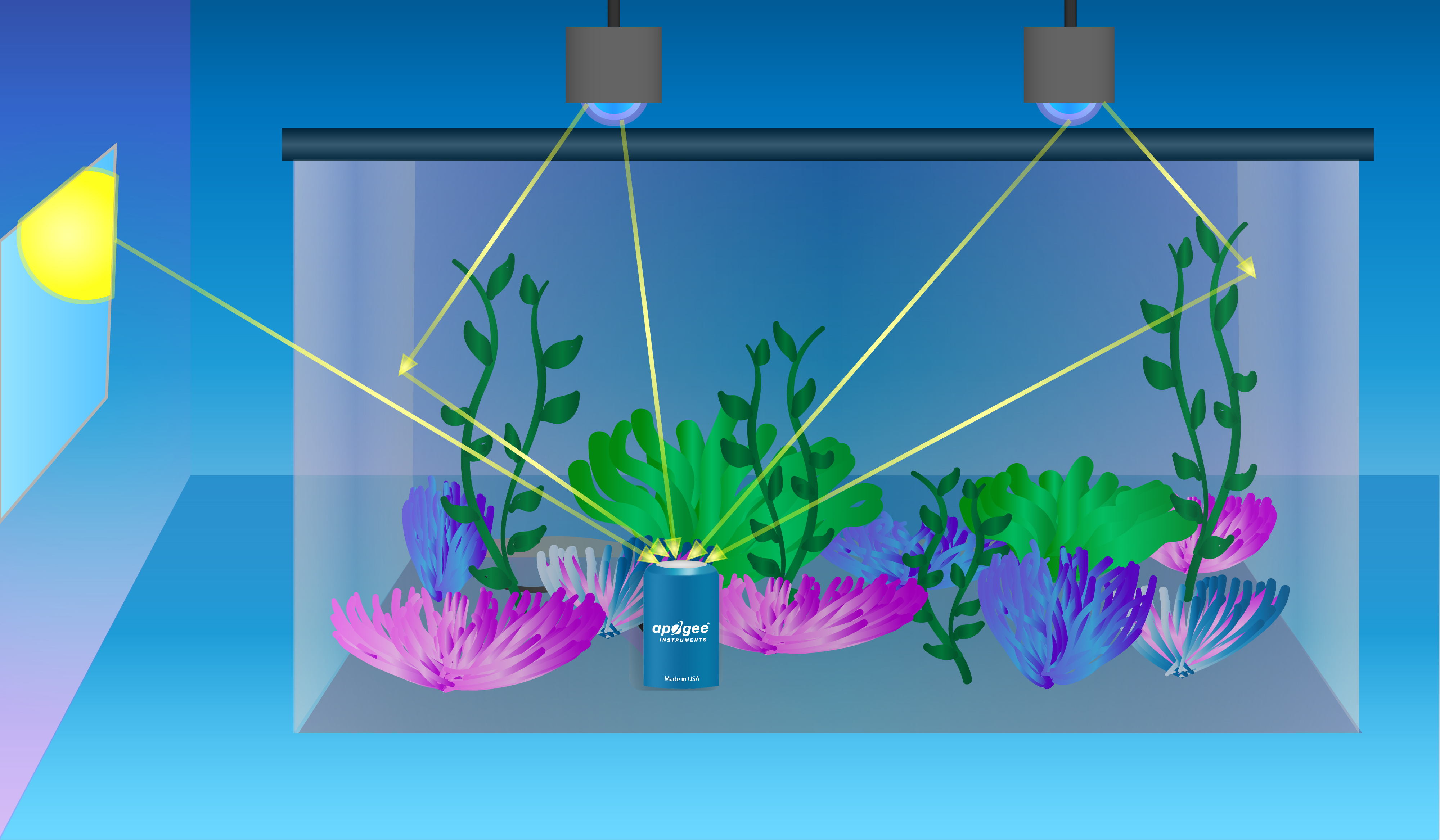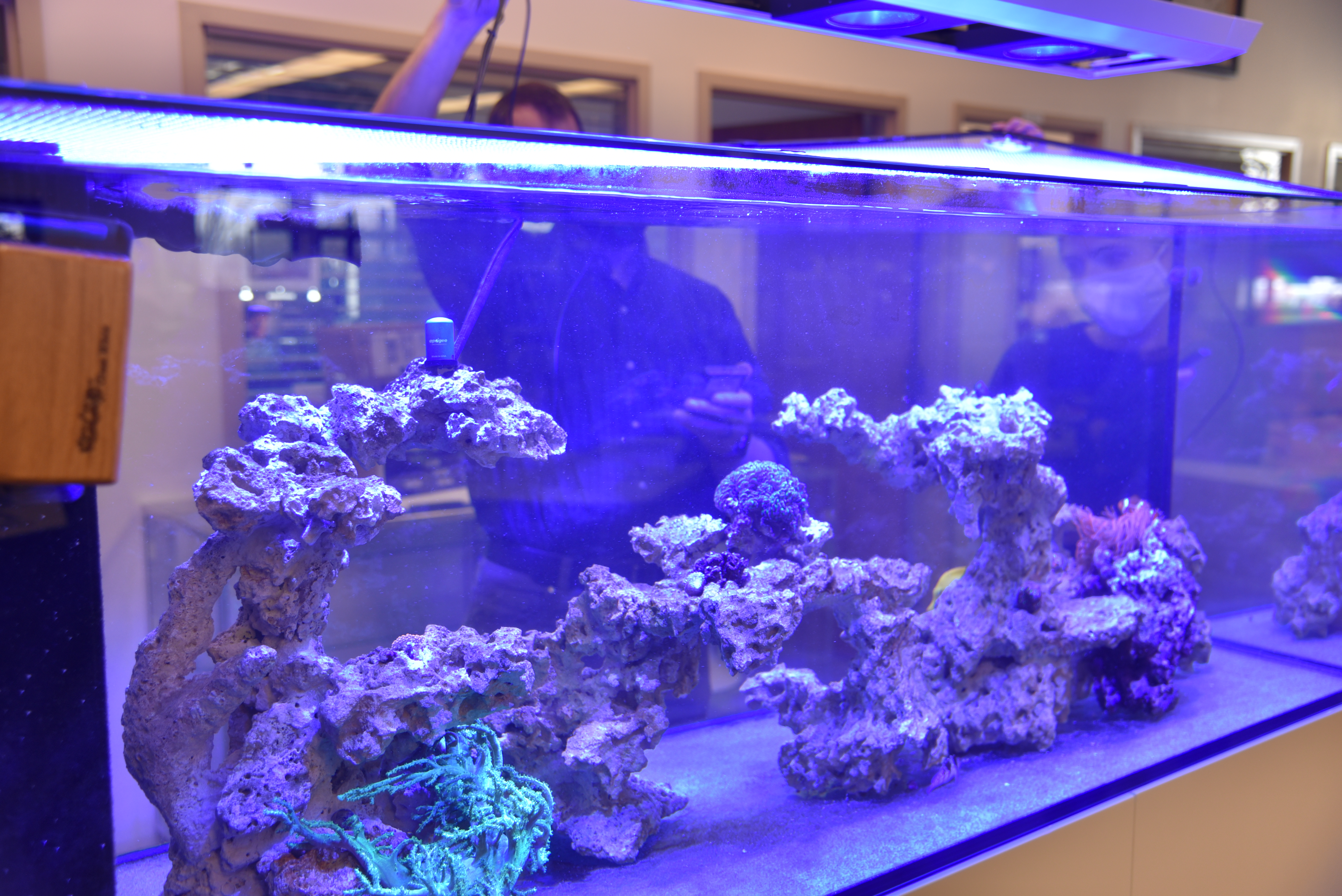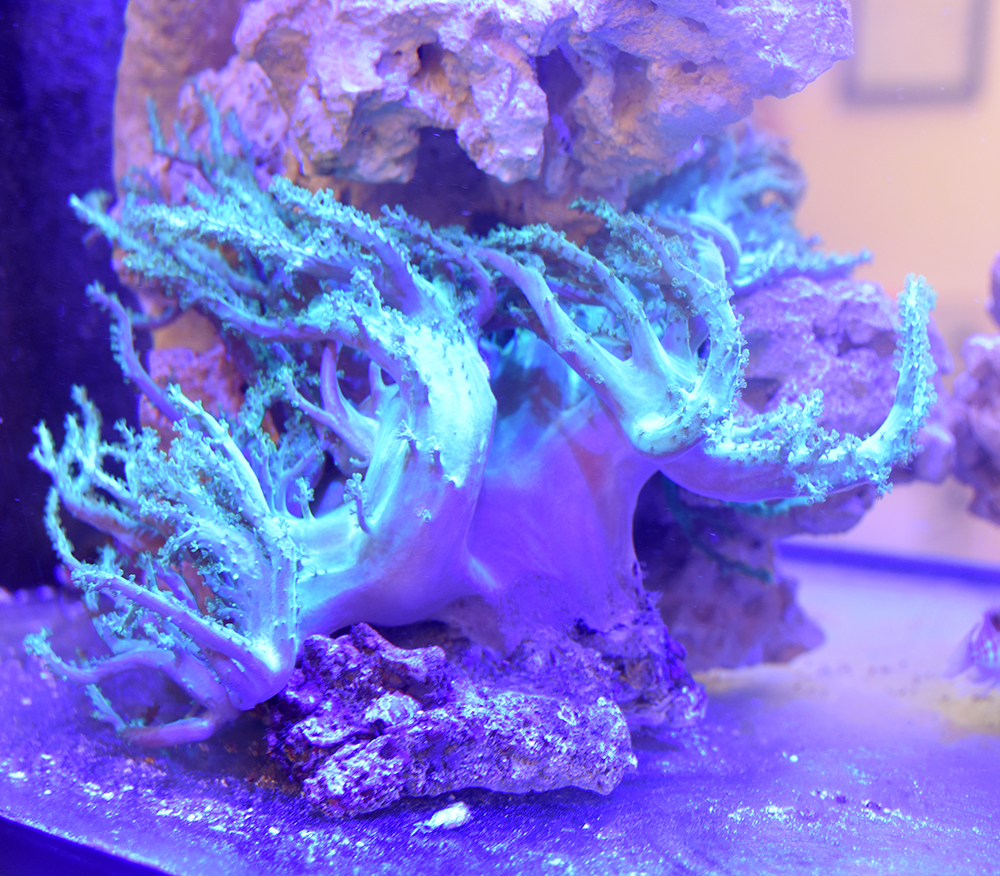Taking Control of the Immersion Effect

Did you know the amount of light a coral receives has a strong influence on its growth rate? Too much light can speed up coral bleaching. Too little light can cause coral browning.
For these reasons, selecting the correct sensor is key to monitoring the marine environment. PAR (Photosynthetically Active Radiation) is the energy source required for coral photosynthesis containing the wavelengths of 400-700 nm. And coral PAR requirements vary greatly due to different depths and water conditions they naturally exist in.
PAR can be measured from both sunlight and electric light sources using a Quantum Sensor to ensure corals are receiving proper light for optimal health. However, when a quantum sensor that was calibrated in air is used to make underwater measurements, the sensor reads low.
This phenomenon is called the immersion effect and happens because the refractive index of water (1.33) is greater than air (1.00). This causes more light to be reflected out of the sensor in water than in air and causes the sensor to read low. When this effect is not corrected for, underwater measurements are only relative, which makes it difficult to compare light in different environments.
Our team of researchers decided to take matters into their own hands and did extensive immersion testing to find individual immersion factors for each Apogee sensor. This ensures all Apogee Underwater Quantum Meters and sensors models (MQ-210, MQ-510, SQ-420, SQ-520) are ready for underwater use right out of the box because they all automatically correct for the immersion effect or have an immersion setting.

Apogee sensors are also potted solid and fully submersible, so you can place the sensors where the corals actually are to get more accurate measurements and take the guesswork out of it.

Lastly, the automatic immersion correction factors account for the water’s distortion of light, which makes it easier to achieve the perfect balance and arrangement of LEDs, fluorescent lights, and other light sources for aquariums. This balance gives corals the proper spectral irradiance and intensity that is critical to helping it thrive while also managing excess light to reduce algae growth and minimize tank maintenance. All of this is taken into account while monitoring the light closely as light systems can easily fail or dim over time without close monitoring.

